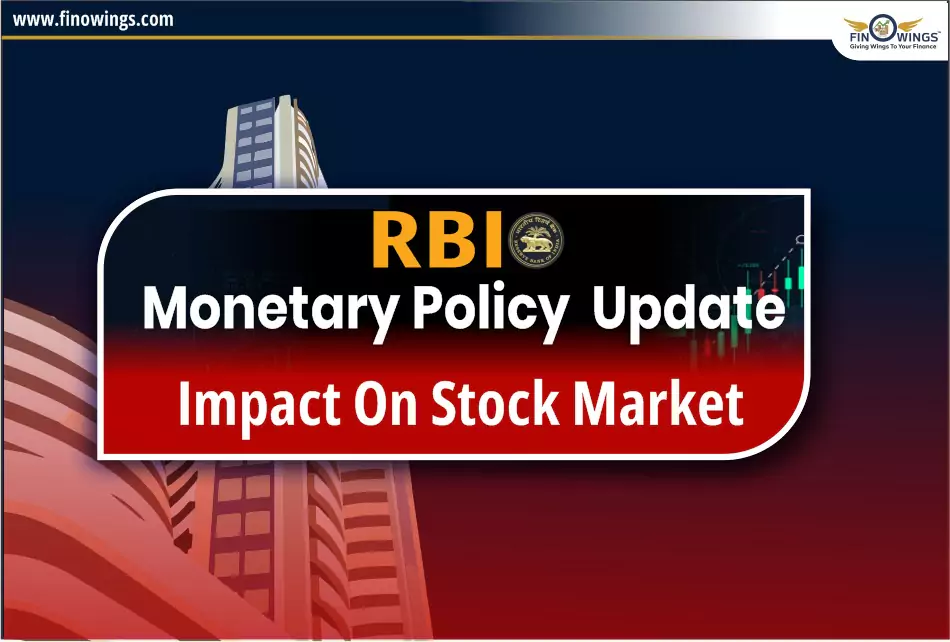Home >> Blog >> RBI Monetary Policy Update | Impact on Stock Market
RBI Monetary Policy Update | Impact on Stock Market

Table of Contents
Today, on August 8th the Monetary Policy was announced by the Reserve Bank of India (RBI) Governor Shaktikanta Das. The Monetary Policy Committee (MPC) of RBI met on August 6-8 for its third bimonthly policy meeting for FY25 which decides interest rates. The central bank has kept the benchmark repo rate unchanged at 6.5%, after holding it steady for a year and a half.
This is a summary of today’s monetary policy announcement. But the question is how will it impact India’s common people and investors?
So first up, let's see what did RBI Governor say about economic stability and inflation forecast?
Inflation and Economic Stability
This is what the inflation forecast says: The Indian economy will grow by 7.2%, according to the Governor. He said that “price stability is essential for continued growth” and stressed the importance of remaining watchful over inflation. Although there has been a small increase in headline inflation to 5.1% in June 2024, RBI’s attention is directed towards bringing it closer to their goal of 4%.
This shows optimism on their part
Click Here to Read more about RBI Annual Report 2023-24 & its Impact on Nifty & Bank Nifty.
What This Means for Investors
Here are some of the advantages of RBI policies for investors:
- Economic Stability: A stable interest rate environment ensures that there is a consistent economic situation. This uniformity is necessary for investments with long-term plans because they do not have to worry about unpredictable variations in rates. Investors can rely on the fact that what makes up their portfolios will always be governed by rules aimed at keeping the economy level as per the central bank’s intentions.
- Encouragement of Growth: When it maintains its rates, RBI shows that it wants growth to take place in an enabling environment. It becomes cheaper for companies to finance expansion projects when they can borrow at low costs due to reduced business investment risks stemming from lower cost levels associated with borrowing funds under such circumstances thus triggering more significant economic activities leading into job creation alongside overall economic development.
- Inflation Control: The main aim of RBI policy towards inflation is management so that investors’ real return value does not get eroded by high inflation rates prevailing around us sometimes. If this happens then people will lose confidence in investments since they cannot predict what will happen next henceforth; however, with 4% targeted by Reserve Bank Of India as a reasonable price stability threshold beyond which anything above can only be considered abnormality, it should create room for calmness within investment circles throughout any given period.
- Real Estate Market Stability: Consistent repo rates are good news for people who put their money into buildings because they help maintain property prices at steady levels while minimizing chances where we might experience real estate bubbles or even worse “bursting” them altogether thereby making housing affordable over time.
Detailed Video
What This Means for Homeowners and Prospective Buyers
The RBI’s decision to maintain the repo rate at 6.50% is good news for homeowners and prospective homebuyers alike for a number of reasons:
Costs of Borrowing are Steady: The central bank’s choice means that banks and other lenders are expected to leave their rates on housing loans unchanged. This stability allows individuals to better plan their budgets since they need not worry about dramatic increases in monthly installments towards mortgages over time.
Consistent Financing: When interest rates remain constant, it becomes simpler to calculate how much one can borrow against what terms so as not only manage but also service such debts effectively. This predictability enables buyers make more informed choices when selecting houses basing them on long-term affordability.
More people can afford houses: Similarly, keeping borrowing costs steady may keep homes within reach of many more people than would otherwise be possible. In times when rates are both low and stable, new mortgage payments each month become affordable thus enabling those who have never owned before enter into this market without strain being placed upon them financially.
Looking Ahead
The next meeting of the RBI's Monetary Policy Committee (MPC) will be held on October 7-9. Though the global economic environment and domestic conditions are expected to have a significant effect on future policy decisions, the bank has remained in its current position for eighteen months already. This steadiness indicates that, at this point in time, the RBI is committed to achieving growth as well as containing inflation — thus laying down some stability in an uncertain world of economies.
More updates will follow soon; we are watching closely what happens with these measures and their impact on India’s economic outlook.
Frequently Asked Questions
The RBI has kept the repo rate unchanged at 6.5% in its latest monetary policy update.
Keeping the repo rate steady can lead to market stability, as investors gain confidence from predictable borrowing costs and economic policies, potentially encouraging investment in stocks.
The RBI aims to control inflation, targeting a rate closer to 4%. Maintaining the repo rate helps manage inflation expectations and promotes price stability, which is crucial for economic growth.
The steady repo rate means consistent borrowing costs for housing loans, allowing homeowners and prospective buyers to better plan their finances without worrying about sudden increases in mortgage rates.
The next RBI Monetary Policy Committee meeting is scheduled for October 7-9. Investors should watch for potential changes in response to global and domestic economic conditions, as the RBI aims to balance growth and inflation control.



















